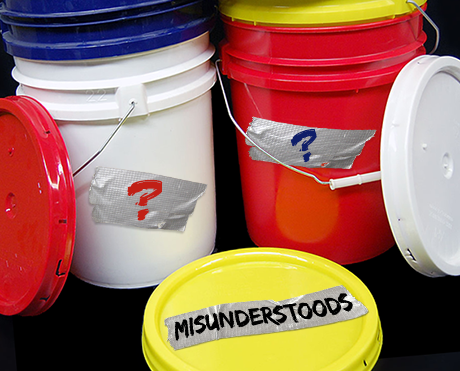Dissecting “The Misunderstoods”- Part II- Billing for SCT
Bloggers note- early last year we posted a popular 2-part series talking about a subject we affectionately called “The Misunderstoods.” Because we periodically field questions about these two levels of service and the complexity of documenting properly to obtain maximum reimbursement, we’re offering up the series again for those of you who may not have viewed it the first time around.
“The Misunderstoods”
There are two level of service categories that we lump into a bucket called “The Misunderstoods” of ambulance billing. Two weeks ago we blogged about the Advanced Life Support, Level 2 (ALS2) level. Today, in Part II, we focus on the Specialty Care Transport or SCT level.

It’s time to remove the cloud of uncertainty that still swirls around this level of transport.
SCT Defined
According to the Medicare Benefit Policy Manual, Chapter 10 – Ambulance Services, a Specialty Care Transport (SCT) is the interfacility transportation of a critically injured or ill beneficiary by ambulance that includes the provision of medical necessary supplies and services at a level of service that goes beyond the scope of the EMT-Paramedic.
Specialty Care Transport is necessary when a beneficiary’s condition requires ongoing care that must be furnished by one or more health professionals in an appropriate specialty area.
The Manual lists the following examples of such health professionals…
- Emergency or Critical Care Nursing
- Emergency Medicine
- Respiratory Care
- Cardiovascular Care
- Paramedic with additional training
State-Set Guidelines
Each State sets minimum guidelines for scope of practice for an EMT-Paramedic. The SCT payment level is meant to offset when an ambulance service must use other personnel or EMT-P’s with advanced levels of training that exceeds the typical EMT-P street-practicing level.
Remember, this transport involves a critically ill or injured patient that is moving from one facility to another facility. The patient’s condition is such that to move the patient safely from Facility A to Facility B, someone is onboard monitoring and treating the patient because the patient has something going on requiring the additional training level of that health professional above and beyond the EMT-P baseline skills.
An EMT-P “with additional training” means that the EMT-P in question has successfully completed additional education determined by the State where he/she practices to furnish higher levels of services required by critically ill and/or injured patients. Other health professionals would be persons skilled in a specific area of expertise required by the patient’s condition during the transport.
Common Misconception
One of the misunderstandings about SCT’s are the crew requirements. A few years ago, one of the Medicare Administrative Contractors refused to pay at the SCT level due to their misinterpretation of the CMS billing guidance.
This MAC denied payment for claims when the ambulance crew included BLS-level crews along with a health professional that typically was not a pre-hospital provider. The scenario for this confusion was that the Patient Care Report documented a BLS crew (2- EMTs, EMT and EVOC, etc.) that met the minimum crewing requirements for the State for a BLS ambulance and then included the health professional, but not necessarily an EMT-P with additional training.
A BLS crew was dispatched to the sending facility where they added a Registered Nurse or Respiratory Therapist, for example, and completed the transport which resulted in an SCT claim being submitted to Medicare. The MAC denied these claims stating that there was no ALS provider accompanying the crew and therefore SCT level was denied.
CMS and the MAC later clarified and reversed those decisions, as the definition as we’ve defined above and the application of the rule does not indicate that a BLS crew accompanying the healthcare provider in a specialty would contraindicate payment at an SCT level.
Documentation
Of course, our Patient Care Report documentation must clearly spell-out the nature of the person’s illness or injury and chronicle that the transport was indeed an SCT transport. The documentation must explain the critical natures of the patient’s condition based on the assessment of the crew and the additional healthcare provider.
In addition, it is incumbent upon the author of the Patient Care Report to be specific about what was attached to or being infused along with whatever specialized treatment and monitoring was required that necessitated the run be conducted outside of the normal ALS level transport.
The documentation should spell-out specifically the name and certification level of the person with additional training or expertise and what specific skills were exercised by that person during transport.
Reminder- Not all Payers
As with our ALS2 discussion, we end once again with a caution. Not all payers recognize the SCT procedure code. Your billing office must consult individual payer guidelines to determine if billing using the SCT HCPCS procedure code is appropriate for that payer.